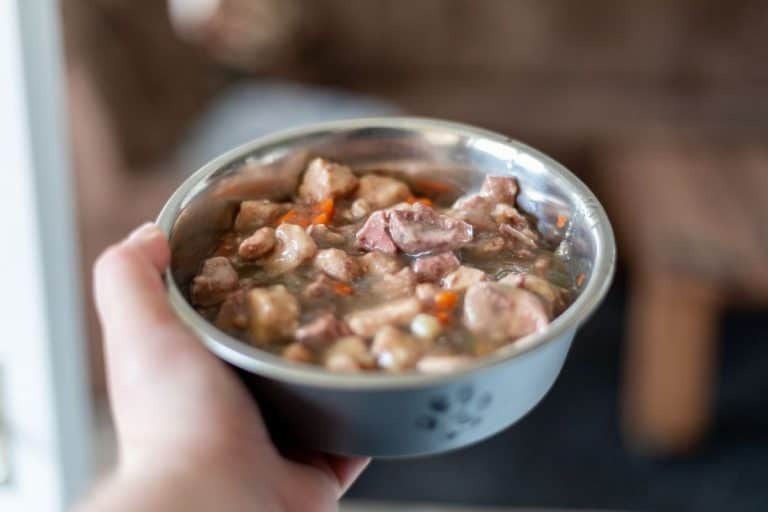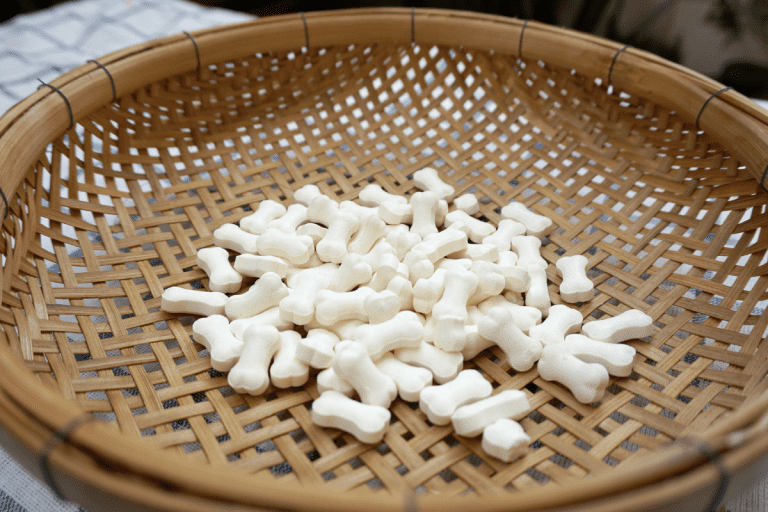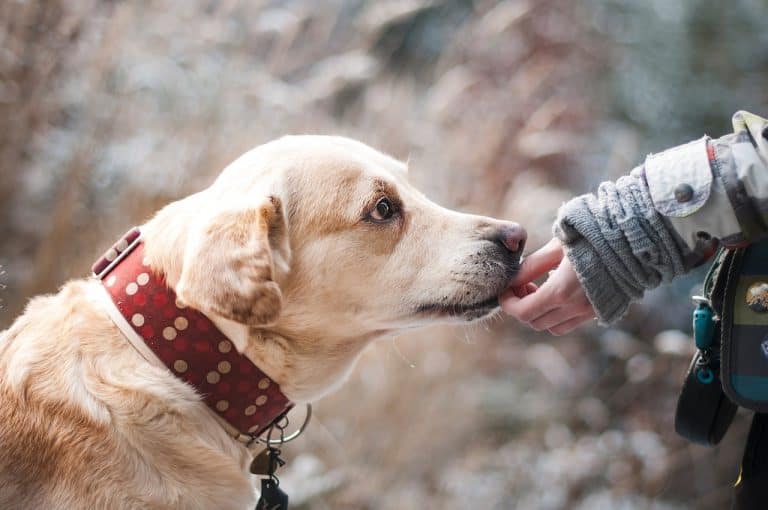How Much Raw Food To Feed A Dog – Adult & Puppy Raw Food Feeding
How much raw food to feed a dog depends on certain factors such as activity level, weight, age, and metabolism of your dog.
Feeding dogs raw food comes with certain questions concerning the type and amount of food they need.
The amount of food adult dogs need is different from the amount puppies need. Puppies need between 3% to 10% of their body weight while adults need between 2% to 5% of their body weight.
This article will provide you with all the information that you need to feed your dog raw food and ensure that they are getting all the required nutrients.
How Much Raw Food Should I Feed My Dog?
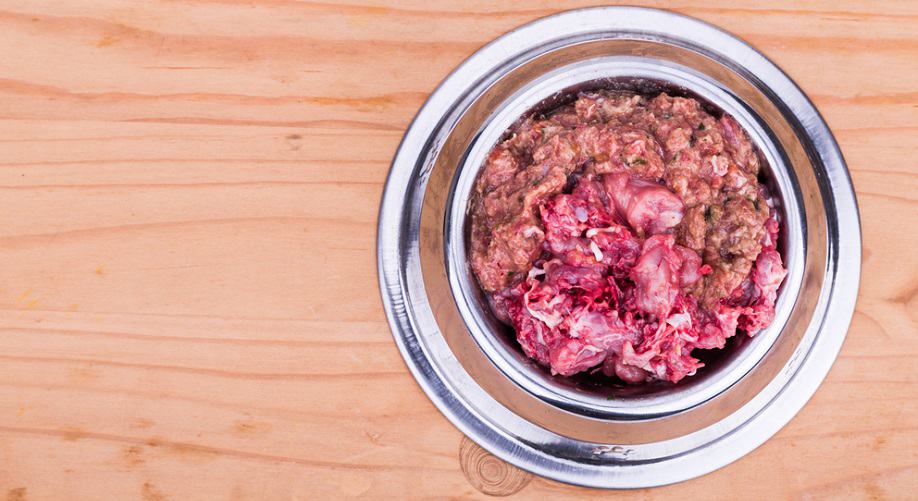
You may have wondered how much raw food should I feed my dog? The general rule of thumb is that you should feed your dog 2-5% of their weight per day and split the total amount into two meals.
The amount varies depending on the dog’s activity and energy levels. Dogs that are less active need less food while working and active dogs need more.
If your dog is very active or working, they need 5% of their weight daily. If your dog has high activity level or is underweight, they should be fed 4% of their body weight.
If your dog has average levels of activity, 3% of their body weight is fine for them. If they are overweight and need to lose some pounds, feed them 2% of their weight and increase their activity level.
Choose a format that is suitable for your dog if you are feeding them commercial raw food.
For instance, owners for small dogs prefer smaller patties or medallions while owners for medium to large dogs prefer chubs and patties due to their larger size.
What Factors Affect How Much Raw Food To Feed Your Dog
There are certain factors to determine the amount of raw food to feed your dog. They include the following:
- Bodyweight – weigh your dog to know their current weight then calculate the amount of food they need by multiplying by 2-5%.
- Activity level – take into consideration the level of activity your dog is getting daily to determine the amount of food they need. Is your dog working, active, inactive, or is their activity level is average? Adjust the amount basing on these elements.
- Adjust for weight gain or loss – if your dog’s current weight is not ideal for their age, you can adjust the amount of their food to ensure that they get to their ideal weight. Use your dog’s body condition score to determine whether they are emaciated, thin, heavy, or obese.
- Life stages – puppies need more food than adult dogs because they need more fuel for their rapidly growing bodies. But you also need to consider their body condition to calculate the food they need. Pregnant dogs need 4-5% of their body weight and senior dogs who are less active need less food.
- Consider the size – toy and small breeds need more of their body weight and larger breeds.
How Many Times A Day Should I Feed My Dog Raw Food?
It is recommended that you feed your adult dog their total daily requirement of raw food two times a day. This helps prevent bloating in large breeds and is better for your dog’s digestion.
Two meals per day also prevent begging by your dog between meals. If you have a busy schedule, feeding your dog once daily is also fine.
For puppies up to 16 weeks old, you should spread their daily food intake over four meals. Between the ages of 17 and 24 weeks, feed your puppy 3 times per day, and from 25 weeks old, feed your dog twice per day.
How Much Raw Food To Feed A Puppy?
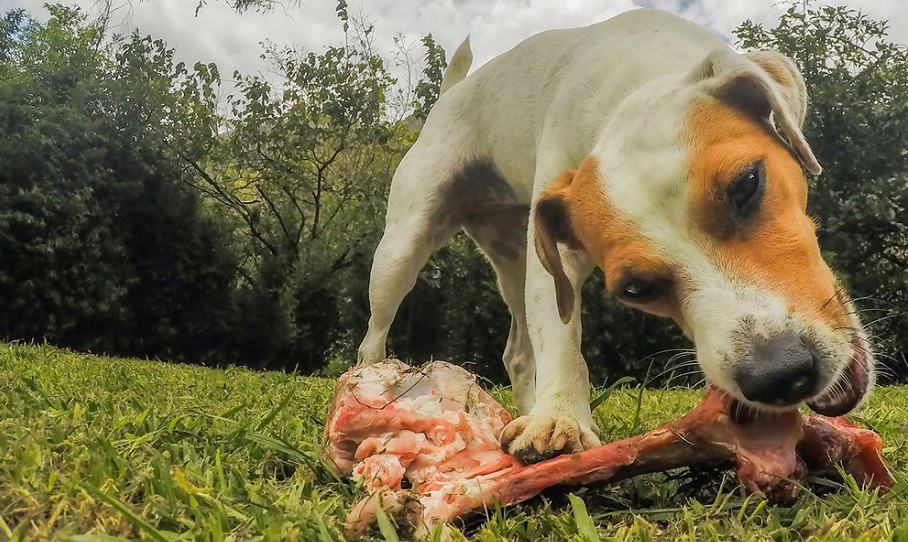
Puppies grow at a fast rate and as a result, they need the right amount of raw food will all the necessary nutrients to support their growth and development. You need to consider that toy dogs grow at a different rate compared to large dogs.
At 8 months, Mastiff or Great Dane is in their prime growth while a Shi Tzu or Yorkie has less to develop physically.
The following is a guideline on how much raw food to feed a puppy and keep in mind that adjustments should be made based on your dog’s development, needs, and diets:
- 9-12 months – 3-4% of their body weight in pounds daily.
- 6-8 months – 4-5% of their body weight in pounds daily.
- 4-5 months – 6-8% of their body weight in pounds daily.
- 2-3 months – 8-10% of their body weight in pounds daily.
At What Age Can I Start Feeding My Dog Raw Food?
You can start feeding your dog raw food during the weaning period when the puppy is between 8 to 12 weeks old.
This is the ideal time to start feeding raw foods to your puppy so that their immune system and body can develop to be strong.
You can start with chicken, turkey, or the prepared mixes to ensure that your puppy is getting the right amounts of bone, meat, vegetables, and organ meat. Avoid feeding your puppy huge bone marrows as this can cause choking.
How To Transition From Dry Kibble To Raw Food Feeding?
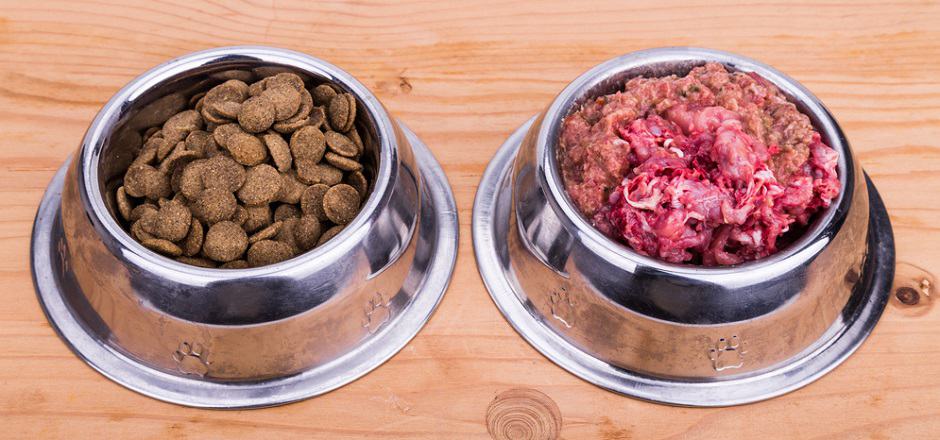
Transitioning your dog from dry kibble to raw food should be done slowly to avoid upsetting your dog’s stomach.
Your dog needs to fast for at least 12 to 24 hours before the transitioning process starts. This is to clear the digestive system of your dog and allow the transition to be smooth.
Ensure that the raw food you are feeding your dog is at room temperature and not in a frosting state by keeping the frost food at room temperature for at least 30 minutes.
The following is a guideline for a 7-day transition from dry kibble to raw food:
- Day 1 and 2 – 75% kibble and 25% raw food.
- Day 3 and 4 – 50% kibble and 50% raw food.
- Day 5 and 6 – 25% kibble and 75% raw food.
- Day 7 – 100% raw food.
Health Benefits Of Feeding Your Dog Raw Food
Are you wondering whether raw food is a good option for your dog? The following are some health benefits for feeding raw foods to dogs:
- Compatible with the biological needs – naturally, the digestive system of dogs is designed to digest raw meat because they are descendants of raw meat-eating ancestors.
- Healthy coat and skin – raw foods contain plenty of zinc, proteins, fresh fats, and vitamin that promote healthier coat and skin.
- Improved oral health and breath – with raw foods, dogs have to tear and rip it up. They also gnaw the bones, removing the tartar and plaque on their teeth. This leads to improved oral health and healthier teeth.
- Improved digestion – raw foods promote maximum absorption of nutrients than dry kibble. Kibble takes 7 to 8 hours to be digested while raw foods take about 2 hours.
- Fewer toxins – raw foods are natural, unprocessed, and do not contain any fillers and artificial flavors which can be dangerous for your dog.
What To Look For In The Raw Food?
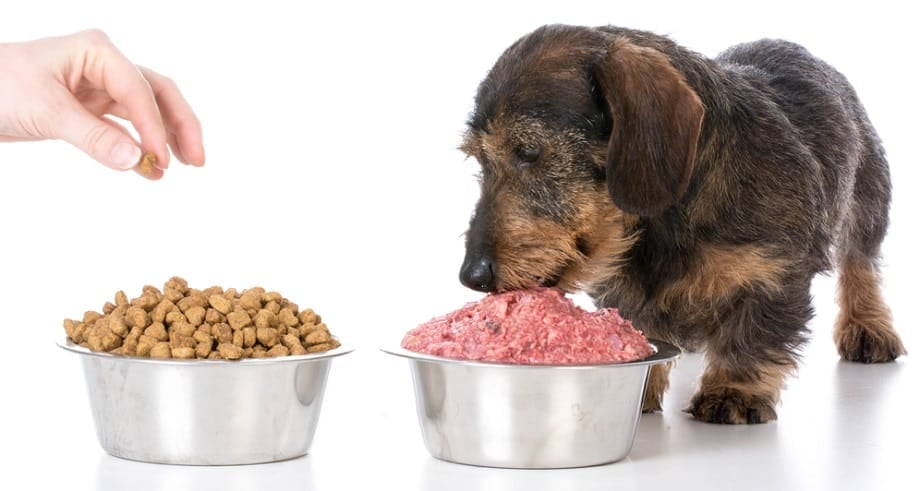
The following guidelines will help you to provide a balanced and complete raw food diet to your dog:
- 75% of your dog’s food should be protein. A good source of protein is meat from the butcher or grocery store.
- The fat should be between 10% and 20% of your dog’s diet.
- Ensure that you get the minerals and calcium right, and bone is a great source. Puppies need between 12% and 15% bone while adult dogs need 10% to 15% bone in their diet.
- Organ meat should be included in your dog’s raw diet in the following percentages: 10% liver, 5% heart, and 5% of pancreas, kidney, and spleen.
- Vegetables and fruits should be 10% of your dog’s diet and ensure they are organic.
What If My Dog Doesn’t Want To Eat Raw Food?
The following are the reasons why your dog is not eating their raw foods and what you can do:
- Your dog is overfed making it easy for them to turn down the food because they are full. Feed your dog the proper amount of food according to weight and age.
- Some dogs are picky eaters and refuse to eat their food basically because they do not like the taste. Add toppings such as parmesan cheese or add bone, chicken, beef broth.
- Your dog is sick. If your dog does not eat their food for more than three days, take them to the vet for a medical check-up.
- Your dog is nauseated and does not feel like eating.
Do Dogs That Eat Raw Food Need Any Additional Supplements?
If you are feeding your dog a balanced and complete raw food diet, they should provide all the necessary vitamins and minerals your dog needs.
Most dogs who eat bones get calcium while those that do not eat bones need calcium supplements in their diet. Essential fatty acid oils from plant and fish sources aid in the development of your dog’s heart, hair, skin, joints, and other body parts.
If you are not sure whether your dog needs supplements or not, get advice from your vet.
How To Properly Handle & Store Raw Food
The following are the ways to properly handle and store raw food:
- Keep thawed food in the refrigerator for three to four days.
- The bone should be discarded after use because it can be brittle and dry.
- You should keep the leftovers in the fridge immediately.
- Keep food in the freezer until they are ready to be used. You should not refreeze thawed food.
- Thoroughly wash your hands after cutting meat as well as after feeding your dog.
- Wash working surfaces and utensils using hot soapy water.
- Thoroughly wash the feeding dishes after use.
- Use stainless steel dishes.
Final Words
Feeding your dog raw food can be beneficial to their health by improving their digestion, oral health, skin, and coat health.
Transitioning your dog to raw food should be done gradually over seven days to give the stomach time to adjust to the new food.
Use the weight of your dog to calculate the amount of raw food you should feed them. Weighing them regularly will ensure that the amount is correct. Handling raw foods should be done properly to avoid contamination which can cause illness in your dog.

